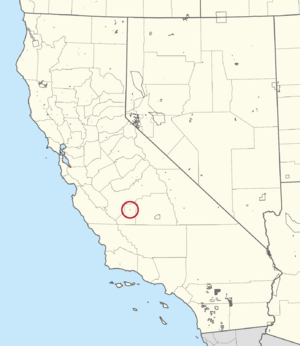Santa Rosa Rancheria facts for kids
The Santa Rosa Rancheria is a special place for the Santa Rosa Indian Community of the Santa Rosa Rancheria. It is an Indian reservation located in California. You can find it about 4.5 miles (7.2 km) southeast of Lemoore, California.
This community belongs to the Tachi Yokuts tribe. They are a federally recognized tribe. The rancheria was first set up in 1934. It started with about 40 acres (16 hectares) of land. Over the years, the land has grown. By 2008, it was 643 acres (260 hectares). More land was added in 2008, making it 1,806 acres (731 hectares) in total.
The Santa Rosa Rancheria is home to the Tachi Palace Hotel & Casino. This helps support the community. In 2000, 517 people lived there. By 2010, the population grew to 652 people. Many young people live on the rancheria. In 2010, almost half of the residents were under 18 years old.
Tribal Leadership
The Santa Rosa Indian Community has its own leaders. These leaders help guide the tribe. They make important decisions for the community.
Ruben Barrios was chosen as the Tribal Chairman in 2009. Before him, Clarence Atwell Jr. was the Tribal Chairman for a very long time. He served for 42 years. He passed away in 2013.
Native American Citizenship
In 1924, a law called the Citizenship Act was passed. This law gave all Native Americans the same citizenship rights as other Americans. They also kept their tribal citizenship. However, this did not always change how the government treated them.
For a long time, the government tried to change Native American ways of life. Children were sent to government schools. Native languages and cultural teachings were often not allowed. This made it hard for people to stay connected to their traditions.
Native people worked hard to support themselves. Many worked as seasonal farm laborers. The community faced economic challenges. Despite these difficulties, the people kept hope for a better future. They worked to build a strong community for their children.
Traditional Language
The Tachi Yokuts tribe has its own special language. It is called the Tachi Yokuts dialect. This language is part of the larger Valley Yokuts language family. It is an important part of their heritage.


